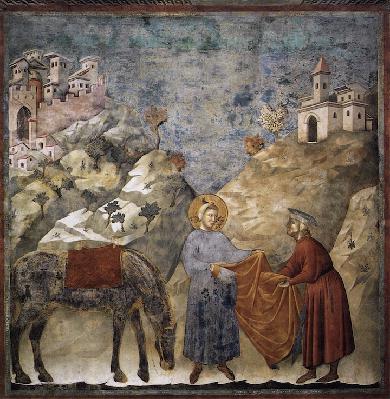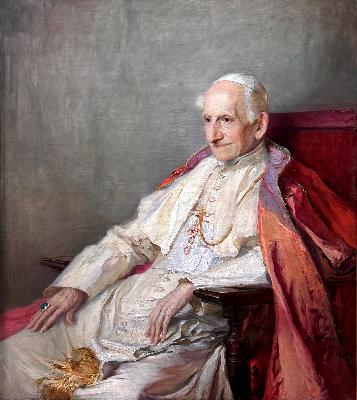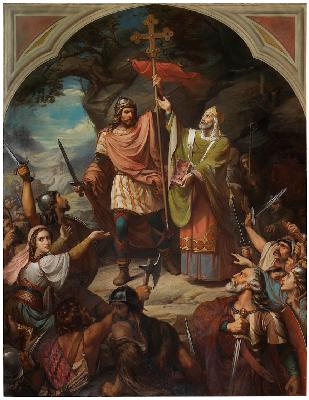The Wisdom That Directs Reason
Update: 2025-10-17
Description
By Joseph R. Wood.
In His discourse at the Last Supper, Christ teaches the Apostles about three related themes: knowing and seeing God, loving God, and being one with God. He holds out these three as different aspects of a single phenomenon.
Christ tells the group, "Where I go you know, and the way you know." Thomas insists they don't know where Christ is going. Christ assures him, "If you had known me, you would have known my Father. And henceforth you do know him, and you have seen him."
Seeing and knowing are linked. What it is to know, the field of epistemology, is one of the most vexing areas of philosophical investigation.
When Philip still asks to be shown the Father - to see Him - Christ explains that He is in the Father, and the Father is in Him. To see Christ is to be shown the Father. See the Father and me as one, Christ seems to exhort them. And if Philip's faith can't fully grasp that identity, he can at least see the visible works Christ has performed.
In the dialogue Statesman, Plato seems to offer a choice similar to what Christ gave Philip. The wise "visitor" to Athens explains that "it is not painting or any other sort of manual craft, but speech and discourse, that constitute the more fitting medium for exhibiting all living things, for those who are able to follow; for the rest, it will be through manual crafts."
If we can't understand things with our speculative or theoretical intellect, we can get some understanding through concrete things made with our hands: Plato's equivalent of "if you can't understand with your mind, understand through works."
And this isn't a mutually exclusive choice. Consider the Benedictine precept of "ora et labora," or "pray and work." Mental acts (including monastic study) and manual acts provide a way of contemplative life, to encounter the greatest truth.
In Plato's Republic, Socrates describes our knowledge of reality as like a line divided into four parts: "imagination" that takes in sensory images; "belief" about what the objects whose images we detect really are; "thought" that works with mental concepts such as geometric shapes that we draw from images of objects; and finally "understanding" that seeks to grasp the highest realities, the forms or divine intellectual ideas of truth, beauty, and goodness that transcend the time-matter world.
Images and physical objects lie in the domain of the visible, the things that we can sense. The "objects" of mental concepts and the forms are in the intelligible domain that we know through reasoned speech.
The intelligible domain on this divided line, says Socrates, is actually the larger part of reality, of what is - larger than the reality we see and sense.
Taken together, Socrates and Plato in these cases are telling us that what we know with our intellect is greater than what we can sense. They draw the link between seeing and knowing. For all of us, knowledge begins in the senses. For some of us, our knowledge will be drawn mainly from those senses. For others (philosophers), the higher intelligible truths will be accessible through the speculative intellect.
Christ, though, will give the Apostles faith in Him and His Father as the key to the highest truths. Plato wasn't far off - he didn't have Judeo-Christian revelation to work with. Jesus adjusts Plato's approach to make the highest truths available to everyone, and he completes the idea that the full truth is much bigger than the visible world, the works and objects that we see around us.
So the problem of seeing and knowing the greatest good has been around for a long time, before the light of Christ brought us a way to understand it more deeply. What about being one with God?
Aristotle saw "being one" as a problem of knowing. In his De Anima (On the Soul), he studies the question of how the rational human soul knows something. He claims that "actual knowledge is identical with its object." And he calls the soul the "place of forms."
His meaning is not entirely clear, ...
In His discourse at the Last Supper, Christ teaches the Apostles about three related themes: knowing and seeing God, loving God, and being one with God. He holds out these three as different aspects of a single phenomenon.
Christ tells the group, "Where I go you know, and the way you know." Thomas insists they don't know where Christ is going. Christ assures him, "If you had known me, you would have known my Father. And henceforth you do know him, and you have seen him."
Seeing and knowing are linked. What it is to know, the field of epistemology, is one of the most vexing areas of philosophical investigation.
When Philip still asks to be shown the Father - to see Him - Christ explains that He is in the Father, and the Father is in Him. To see Christ is to be shown the Father. See the Father and me as one, Christ seems to exhort them. And if Philip's faith can't fully grasp that identity, he can at least see the visible works Christ has performed.
In the dialogue Statesman, Plato seems to offer a choice similar to what Christ gave Philip. The wise "visitor" to Athens explains that "it is not painting or any other sort of manual craft, but speech and discourse, that constitute the more fitting medium for exhibiting all living things, for those who are able to follow; for the rest, it will be through manual crafts."
If we can't understand things with our speculative or theoretical intellect, we can get some understanding through concrete things made with our hands: Plato's equivalent of "if you can't understand with your mind, understand through works."
And this isn't a mutually exclusive choice. Consider the Benedictine precept of "ora et labora," or "pray and work." Mental acts (including monastic study) and manual acts provide a way of contemplative life, to encounter the greatest truth.
In Plato's Republic, Socrates describes our knowledge of reality as like a line divided into four parts: "imagination" that takes in sensory images; "belief" about what the objects whose images we detect really are; "thought" that works with mental concepts such as geometric shapes that we draw from images of objects; and finally "understanding" that seeks to grasp the highest realities, the forms or divine intellectual ideas of truth, beauty, and goodness that transcend the time-matter world.
Images and physical objects lie in the domain of the visible, the things that we can sense. The "objects" of mental concepts and the forms are in the intelligible domain that we know through reasoned speech.
The intelligible domain on this divided line, says Socrates, is actually the larger part of reality, of what is - larger than the reality we see and sense.
Taken together, Socrates and Plato in these cases are telling us that what we know with our intellect is greater than what we can sense. They draw the link between seeing and knowing. For all of us, knowledge begins in the senses. For some of us, our knowledge will be drawn mainly from those senses. For others (philosophers), the higher intelligible truths will be accessible through the speculative intellect.
Christ, though, will give the Apostles faith in Him and His Father as the key to the highest truths. Plato wasn't far off - he didn't have Judeo-Christian revelation to work with. Jesus adjusts Plato's approach to make the highest truths available to everyone, and he completes the idea that the full truth is much bigger than the visible world, the works and objects that we see around us.
So the problem of seeing and knowing the greatest good has been around for a long time, before the light of Christ brought us a way to understand it more deeply. What about being one with God?
Aristotle saw "being one" as a problem of knowing. In his De Anima (On the Soul), he studies the question of how the rational human soul knows something. He claims that "actual knowledge is identical with its object." And he calls the soul the "place of forms."
His meaning is not entirely clear, ...
Comments
In Channel
























